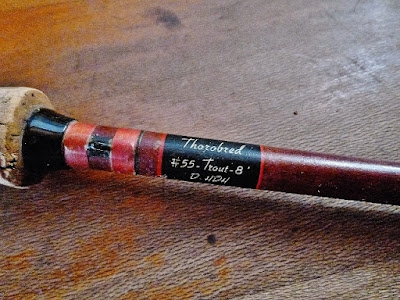Ladies and gentlemen, the
swamp has been drained into the cabinet and we have now arrived at entropy. A
threshold, if you will. In this moment we must choose what America
Are we going to be a republic
based on ideology, exceptionalism and myth? The cultural value set
of Mike Pence's ‘American Identity’ movement?
Or are we going forward
stewarding a nation based on a consilience of the sciences, arts, humanities,
liberty and justice for all?
Some are looking for the
mythical cowboy to ride in and save America
 |
| Roy Moore |
Presidential Adviser-For-A-Minute
and RW mule driver Steve Bannon made a heroic flight down to Alabama
My paradox-absorbing
faculties, working overtime, are sorely taxed and approaching tilt.
I’m sure all of you who have
been awake this past year are aware there are a lot of fires burning right
now, both physical and metaphorical. What’s maddening is that the conflagration
is not coincidental but the result of long-planned and far-reaching cause and
affect. And it’s not all about Trump. He just recently stepped into it and only
reflects what’s been fed to him. You are what you eat.
The Trump administration and
congressional Republicans are moving ahead with their plan to systematically
deconstruct programs in place designed to combat climate change and bring us
online with clean energy. Trump and the Republicans in congress are eating away
at commonwealth lands and the public safety net and funneling those resources
and monies toward their most powerful donors, the American oligarchs who
account for 90% of their campaign donations. Again, follow the money trail and
it will lead you to the truth. Regarding the new U.S.
This is supposed to be an
outdoor journal about tying flies and flyfishing, so, all things being
connected, here are a few things congressional Republicans, Trump and his
appointees are working on that will affect the outdoors, hence angling and
anglers, over the long term:
The EPA is working to repeal the Clean Power Plan, the United States
EPA administrator Scott Pruitt is calling for the elimination of tax incentives for producers
of wind and solar energy, and this reflected in the new Republican tax plan
(which, ironically, gives a massive tax cut to producers of coal, uranium and
gas).
Pruitt bars scientists who receive EPA grants from the agency’s advisory
boards, replacing them with industry-funded scientists.
In the name of “grid resiliency,” the Department of Energy (now headed by Trump
appointee Rick Perry who, prior to his appointment, vowed to “get rid of” the
agency he now heads, though at the time couldn’t recall the name of the agency
he wanted to get rid of) wants a higher value placed on energy produced from coal
and nuclear plants, a move that could cost taxpayer/consumers $10.6 billion a
year.
The U.S.
The Interior Department has been instructed to halt a study of the public
health effects of mountaintop-removal coal mining; and is also offering 77
million acres in the Gulf of Mexico for oil and gas drilling, the largest such
lease sale in the department’s history.
The National Park Service has been instructed to double the price of admission
to the most popular national parks, raising it to $70. (I suspect this is
designed to sour public opinion against the idea of maintaining national parks,
ensuring less resistance to eventually selling them off).
Trump appointee, Interior Secretary Ryan Zinke, working in conjunction with Energy Fuels Resources, a
uranium mining company, Utah Senator Orin Hatch and other Republicans, have
vastly reduced the size of Bears Ears and Grand Staircase
National Monuments Utah
Ryan Zinke is a twisty piece
of work. Just prior to his appointment he vowed again and again to protect
our public lands and ensure that they remain intact. Yet, he is a long-time
operative and known nature faker with a record of saying one thing while
actually doing the opposite. Zinke is fond of projecting a conservationist
image. If you go to his website you’ll find a picture of him fly fishing. Like
Roy Moore, Zinke wants you to know that he is a cowboy hero, complete with
cowboy suit, hat and horse. He wants you to know that he is a rugged, independent,
salt-of-the-earth, man of the country. Of course that aint really what he is.
In reality he is a radical RW ideologue and mechanic for extractive interests,
a tool. A tool placed where he can go to work dissembling our public lands so
they can eventually be wholesaled to extracting interests.
And I wonder why the rush to
sell commonwealth lands when the lease system already in place presents a level
opportunity for grazing and extraction while still keeping the public lands
under the ownership and oversight of the American people? Are we experiencing a
lack of raw materials because we have denied access to them? I’m not seeing the
evidence of it. I once worked as range manager for a 3000 acre BLM range lease.
At the time, the ranch I worked for paid $1.46 per year, per cow/calf unit (the
fee Cliven Bundy refuses to pay), and made 900 times the fee on a season’s
weight gain, per unit. Not a bad return.
 |
| Cliven Bundy |
Interestingly, the RW dominionist
militiamen who took over the reserve were exonerated in an Oregon Nevada Utah
And here’s a well-written
plea from Montana
If you’re experiencing some
indiscriminate rage, maybe it’s a good time to focus, set your sights, draw a deep breath, and let fly in a worthwhile direction. Speak to power. Write. If
we don’t write the script, K Street and the likes of Rupert Murdoch, Rush Limbaugh, Steve Bannon and Alex Jones
 |
| Yours Truly |
 |
| The Lone Soft-Hackler |



























